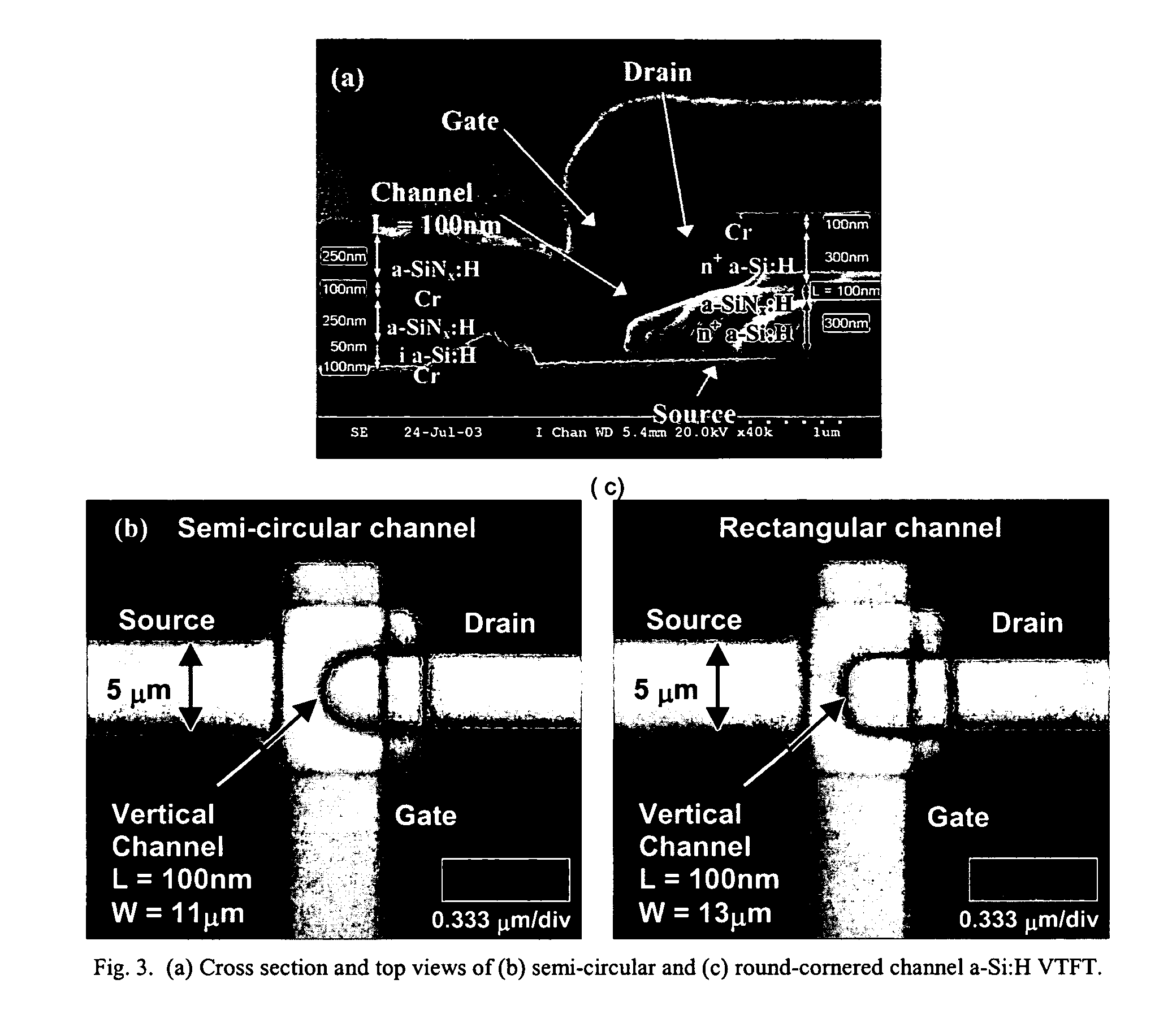Vertical thin film transistor electronics
a technology of vertical thin film transistors and electronics, applied in transistors, electrical devices, solid-state devices, etc., to achieve the effect of reducing film thickness, reducing leakage current, and effectively suppressing
- Summary
- Abstract
- Description
- Claims
- Application Information
AI Technical Summary
Benefits of technology
Problems solved by technology
Method used
Image
Examples
Embodiment Construction
[0004] Disclosed here is the design of a new vertical thin film transistor (VTFT) using hydrogenated amorphous silicon (a-Si:H) technology. This design allows the channel length to be scaled down to nanometer-scale (100 nm and beyond) as well as the smallest possible TFT size on glass, plastic, or other common types of substrates, based on the standard photo-etching and thin film deposition processes [1],[2],[3],[4],[5]. The emphasis of using the standard processes for the new VTFTs has a strong implication that no additional process equipment and capital investments are required for technological advancements and gains in performance.
[0005] At the current state of art, lithographic technology is constrained to 5-μm or larger features [6] for large-area active-matrix imagers and displays, due to the stringent requirements of photo-etching precision and high yield on TFT and interconnect-line processes for virtually flawless images and low manufacturing cost. Consequently, advanced ...
PUM
 Login to View More
Login to View More Abstract
Description
Claims
Application Information
 Login to View More
Login to View More - R&D
- Intellectual Property
- Life Sciences
- Materials
- Tech Scout
- Unparalleled Data Quality
- Higher Quality Content
- 60% Fewer Hallucinations
Browse by: Latest US Patents, China's latest patents, Technical Efficacy Thesaurus, Application Domain, Technology Topic, Popular Technical Reports.
© 2025 PatSnap. All rights reserved.Legal|Privacy policy|Modern Slavery Act Transparency Statement|Sitemap|About US| Contact US: help@patsnap.com



